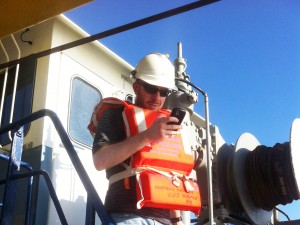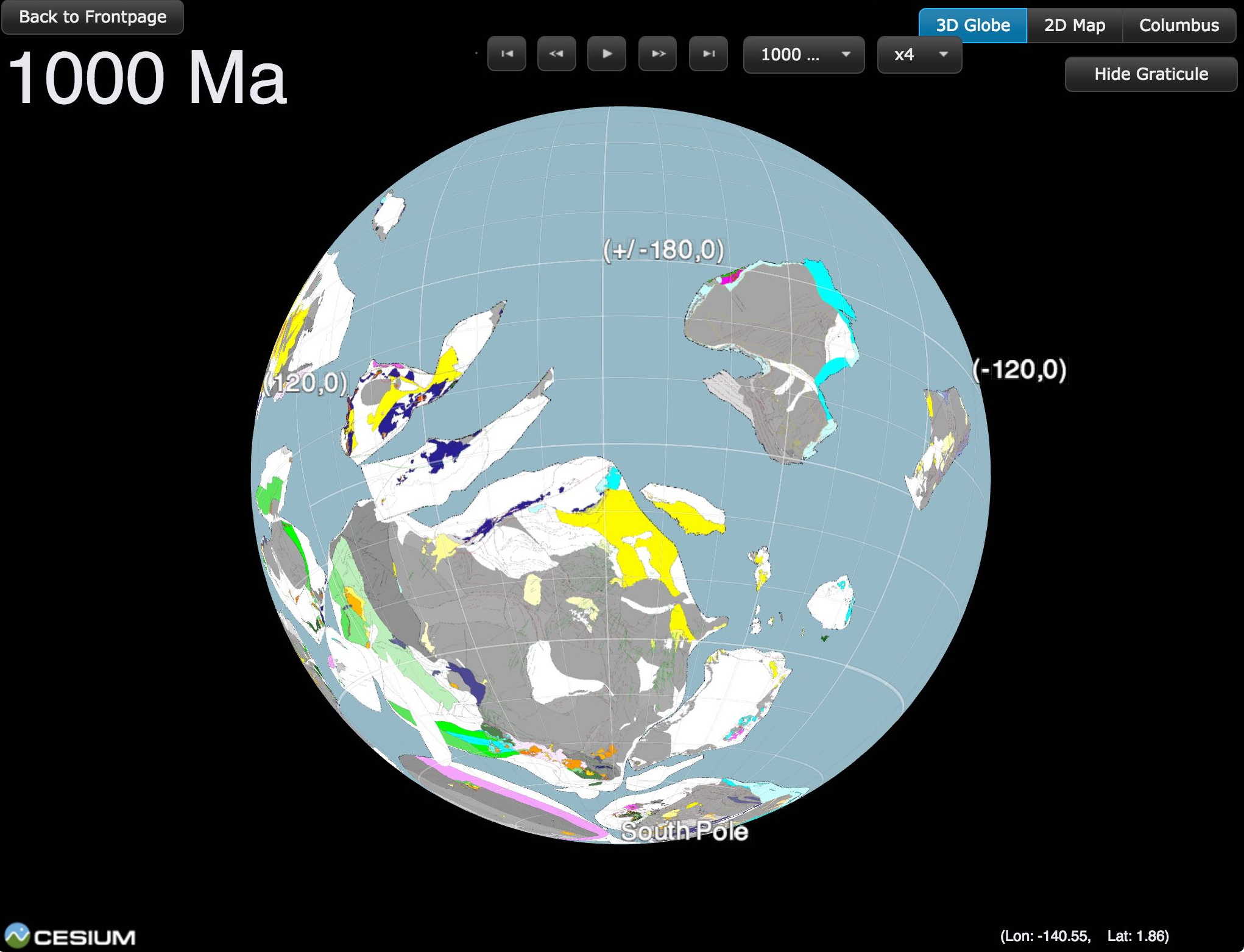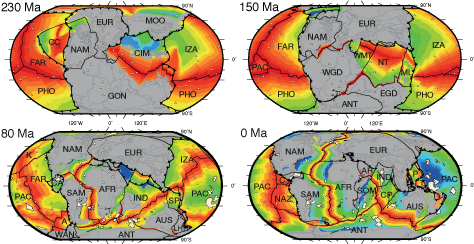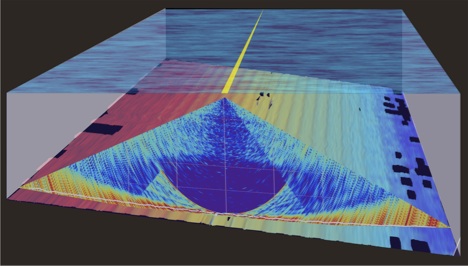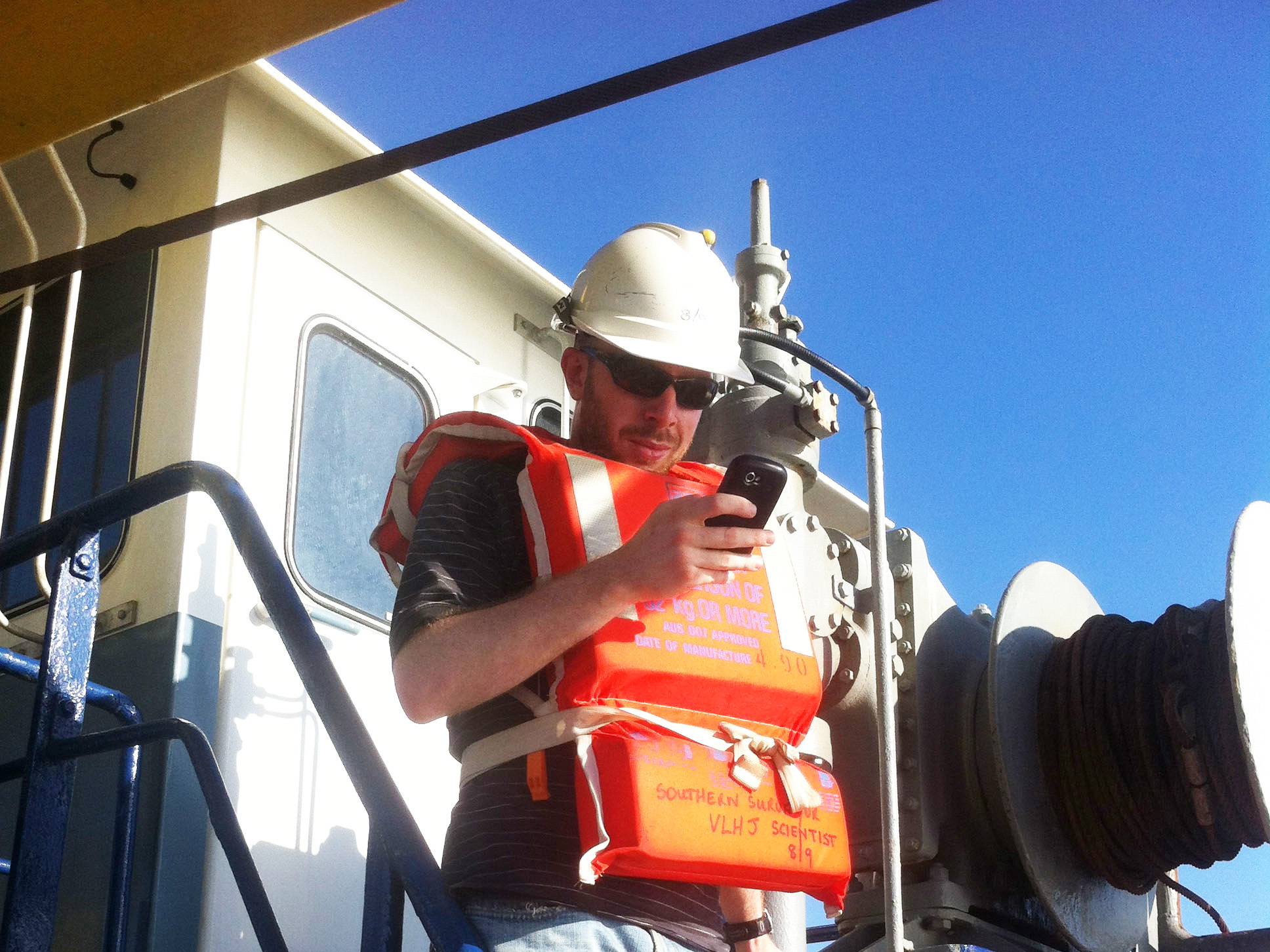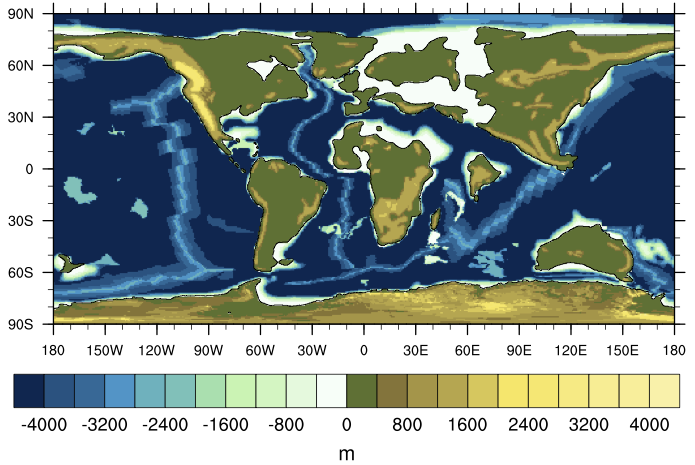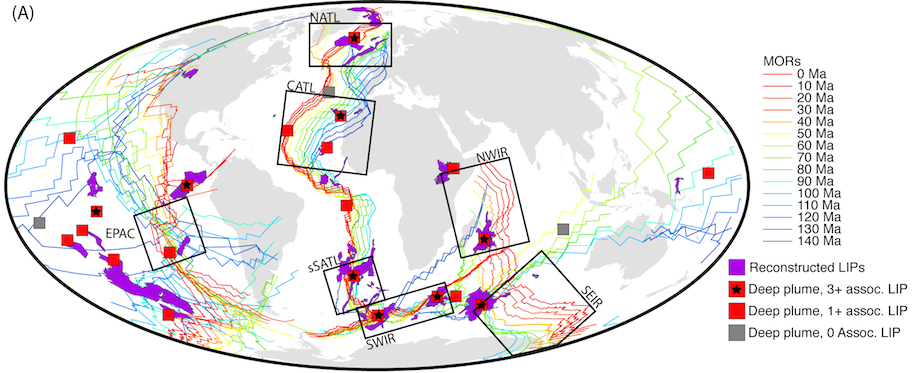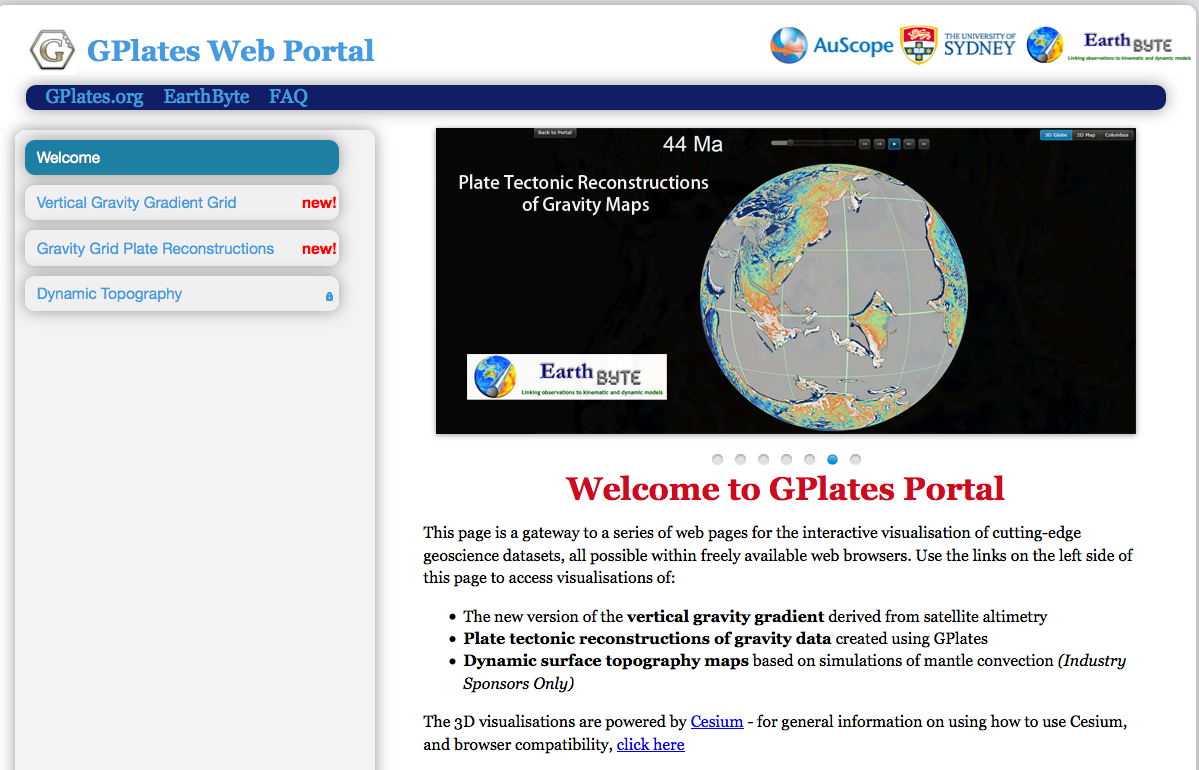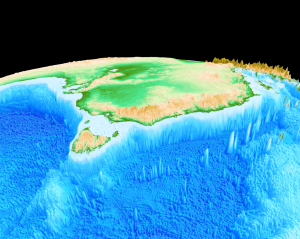 Congratulations to Prof Dietmar Müller, Dr Nicolas Flament, Dr Kara Matthews, Dr Simon Williams, and Prof Michael Gurnis on their paper recently published in Earth and Planetary Science Letters. Their paper, Formation of Australian continental margin highlands driven by plate-mantle interaction, has featured in a variety of Australian and international media outlets.
Congratulations to Prof Dietmar Müller, Dr Nicolas Flament, Dr Kara Matthews, Dr Simon Williams, and Prof Michael Gurnis on their paper recently published in Earth and Planetary Science Letters. Their paper, Formation of Australian continental margin highlands driven by plate-mantle interaction, has featured in a variety of Australian and international media outlets.
Dr Simon Williams
Phone: +61 2 9351 8904
Madsen Building F09, Room 404School of Geosciences
The University of Sydney
Sydney, NSW 2006
Australia
See below for EarthByte content related to Simon.
Geologists Discover How Australia’s Highest Mountain Formed – Media Release
 Geologists from the University of Sydney and the California Institute of Technology have solved the mystery of how Australia’s highest mountain – Mount Kosciusko – and surrounding alps came to exist.
Geologists from the University of Sydney and the California Institute of Technology have solved the mystery of how Australia’s highest mountain – Mount Kosciusko – and surrounding alps came to exist.
Most of the world’s mountain belts are the result of two continents colliding (including the Himalayas) or volcanism. The mountains of Australia’s Eastern highlands – stretching from north-eastern Queensland to western Victoria – are an exception. Until now no one knew how they formed.
PLOS ONE – The GPlates Portal: Cloud-Based Interactive 3D Visualization of Global Geophysical and Geological Data in a Web Browser
Author List: Dietmar Müller, Xiaodong Qin, David Sandwell, Adriana Dutkiewicz, Simon Williams, Nicolas Flament, Stefan Maus, Maria Seton Citation: Müller, R. D., Qin, X., Sandwell, D. T., Dutkiewicz, A., Williams, S. E., Flament, N., Maus, S., & Seton, M. (2016). The GPlates Portal: Cloud-Based Interactive 3D Visualization of Global Geophysical and Geological Data in a Web Browser. … Read more…
Earth and Planetary Science Letters – Formation of Australian continental margin highlands driven by plate–mantle interaction
Author List: Dietmar Müller, Nicolas Flament, Kara Matthews, Simon Williams and Mike Gurnis Citation: Müller, R. D., Flament, N., Matthews, K. J., Williams, S. E., & Gurnis, M. (2016). Formation of Australian continental margin highlands driven by plate–mantle interaction. Earth and Planetary Science Letters, 441, 60–70. http://dx.doi.org/10.1016/j.epsl.2016.02.025 Formation of Australian continental margin highlands driven by plate–mantle … Read more…
Geophysical Research Letters – Alignment between seafloor spreading directions and absolute plate motions through time
Author List: Simon Williams, Nicolas Flament and Dietmar Müller Citation: Williams, S., Flament, N., & Müller, R. D. (2016). Alignment between seafloor spreading directions and absolute plate motions through time. Geophysical Research Letters, 43, 1472–1480, doi:10.1002/2015GL067155. Alignment between seafloor spreading directions and absolute plate motions through time
Earth-Science Reviews – The Late Cretaceous to recent tectonic history of the Pacific Ocean basin
Wright, N. M., Seton, M., Williams, S. E., & Müller, R. D. (2016). The Late Cretaceous to recent tectonic history of the Pacific Ocean basin. Earth-Science Reviews, 154, 138–173. http://dx.doi.org/10.1016/j.earscirev.2015.11.015 The Late Cretaceous to recent tectonic history of the Pacific Ocean basin
Tectonophysics – Full-fit reconstruction of the South China Sea conjugate margins
Bai, Y., Wu, S., Liu, Z., Müller, R. D., Williams, S. E., Zahirovic, S., & Dong, D. (2015). Full-fit reconstruction of the South China Sea conjugate margins. Tectonophysics, 661, 121–135. http://dx.doi.org/10.1016/j.tecto.2015.08.028 Full-fit reconstruction of the South China Sea conjugate margins
GPlates Portal International Media Coverage
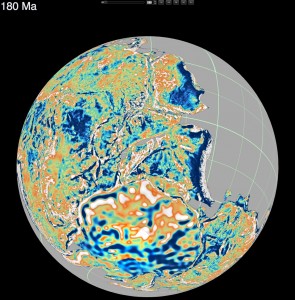 The recent article on the GPlates Portal published in PLOS ONE by Prof Dietmar Müller, Xiaodong Qin, Prof David Sandwell, Dr Adriana Dutkiewicz, Dr Simon Williams, Dr Nicolas Flament, Dr Stefan Maus, and Dr Maria Seton, has received significant international media attention over the past week, featuring in articles from Australia, UK, US, India, and UAE!
The recent article on the GPlates Portal published in PLOS ONE by Prof Dietmar Müller, Xiaodong Qin, Prof David Sandwell, Dr Adriana Dutkiewicz, Dr Simon Williams, Dr Nicolas Flament, Dr Stefan Maus, and Dr Maria Seton, has received significant international media attention over the past week, featuring in articles from Australia, UK, US, India, and UAE!
See the list of online media below, and check out the interactive globes yourself!
History and current advances in reconstructing the Earth through deep geological time
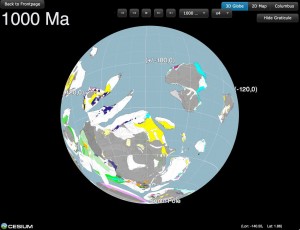 Time machine: History and current advances in reconstructing the Earth through deep geological time – an article on Quartz by Steve LeVine. The article is a review of the development of ideas and technologies in reconstructing the Earth through deep time, aimed at understanding supercontinent assembly, breakup and dispersal, starting with Alfred Wegener. The article focusses on research activities in the context of the IGCP 648 project ‘Supercontinent Cycles and Global Geodynamics‘ led by Zheng-Xiang Li. The piece provides some historical context, and highlights the work of a number of leading scientists, postdoctoral researchers and PhD students currently involved in this work. … Read more…
Time machine: History and current advances in reconstructing the Earth through deep geological time – an article on Quartz by Steve LeVine. The article is a review of the development of ideas and technologies in reconstructing the Earth through deep time, aimed at understanding supercontinent assembly, breakup and dispersal, starting with Alfred Wegener. The article focusses on research activities in the context of the IGCP 648 project ‘Supercontinent Cycles and Global Geodynamics‘ led by Zheng-Xiang Li. The piece provides some historical context, and highlights the work of a number of leading scientists, postdoctoral researchers and PhD students currently involved in this work. … Read more…
Ocean basin evolution and global-scale plate reorganization events since Pangea breakup
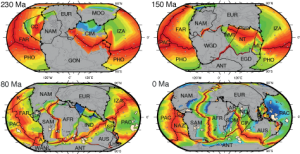 Citation
Citation
Müller R.D., Seton, M., Zahirovic, S., Williams, S.E., Matthews, K.J., Wright, N.M., Shephard, G.E., Maloney, K.T., Barnett-Moore, N., Hosseinpour, M., Bower, D.J., Cannon, J., 2016. Ocean basin evolution and global-scale plate reorganization events since Pangea breakup, Annual Review of Earth and Planetary Sciences, Vol 44, 107-138. DOI: 10.1146/annurev-earth-060115-012211.
Abstract
We present a revised global plate motion model with continuously closing plate boundaries ranging from the Triassic at 230 Ma to the present day, assess differences between alternative absolute plate motion models, and review global tectonic events. Relatively high mean absolute plate motion rates around 9–10 cm yr-1 between 140 and 120 Ma may be related to transient plate motion accelerations driven by the successive emplacement of a sequence of large igneous provinces during that time. … Read more…
Simon Williams reports from the TECTA Cruise
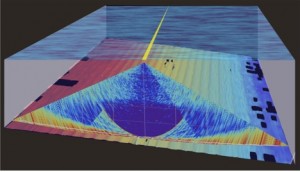 EarthByter Simon Williams is currently part of an international team of scientists sailing around the Tasman Sea on board the French Research Vessel ‘L’Atalante’. The voyage is collecting geophysical data that will help to unravel the mysteries of Earth’s geodynamic evolution and subduction initiation East of Australia, as well as profound changes in Southwest Pacific climate and ocean currents through geological history. To read the news from the voyage, download the PDF newsletters below.
EarthByter Simon Williams is currently part of an international team of scientists sailing around the Tasman Sea on board the French Research Vessel ‘L’Atalante’. The voyage is collecting geophysical data that will help to unravel the mysteries of Earth’s geodynamic evolution and subduction initiation East of Australia, as well as profound changes in Southwest Pacific climate and ocean currents through geological history. To read the news from the voyage, download the PDF newsletters below.
Newsletter Number 1, 10 September 2015 – pdf
Newsletter Number 2, 17 September 2015 – pdf
Newsletter Number 3, 25 September 2015 – pdf
Newsletter Number 4, 1 October 2015 – pdf
… Read more…
Big Data Knowledge Discovery
Big Data Knowledge Discovery is an interdisciplinary research initiative that focuses on the scientific challenges and opportunities presented by the use of the new techniques of data science applied in the natural sciences. This research initiative brings together world class discipline leaders in the data-intensive sciences of Geo Sciences, Life Sciences and Physical Sciences with … Read more…
Nature – Onset of Antarctic Circumpolar Current 30 million years ago as Tasmanian Gateway aligned with westerlies
Scher, H. D., Whittaker, J. M., Williams, S. E., Latimer, J. C., Kordesch, W, E, C., & Delaney, M, L. (2015). Onset of Antarctic Circumpolar Current 30 million years ago as Tasmanian Gateway aligned with westerlies. Nature, 523, 580-583.
Congratulations to Simon Williams and Tassie EarthByter Joanne Whittaker for co-authoring the paper in Nature.
In a project led by Howie Scher from the University of South Carolina they used fossil fish teeth recovered from the oceans around Australia combined with detailed tectonic reconstructions to shed new light on the origins of the world’s mightiest ocean current, … Read more…
Earth’s climate throughout the Phanerozoic
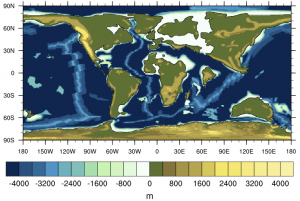 Project Summary
Project Summary
EarthByte is involved in a series of projects aimed at understanding and modeling Earth’s climate throughout the Phanerozoic. Some of these projects include:
- Future Fellowship of Maria Seton on “Oceanic gateways: a primary control on global climate change?”
- Basin GENESIS Hub activities, related to the effect of the mantle, crustal deformation, erosion and sedimentary processes on sedimentary basins
- ATOM – a coupled atmospheric-ocean circulation code jointly developed by Prof. Roger Grundmann and EarthByte.
EarthByte’s expertise in tectonics, geodynamics and surface process modeling is enhanced by close collaborations with leading palaeoclimate modellers and geochemical oceanographers. … Read more…
Earth's climate throughout the Phanerozoic
 Project Summary
Project Summary
EarthByte is involved in a series of projects aimed at understanding and modeling Earth’s climate throughout the Phanerozoic. Some of these projects include:
- Future Fellowship of Maria Seton on “Oceanic gateways: a primary control on global climate change?”
- Basin GENESIS Hub activities, related to the effect of the mantle, crustal deformation, erosion and sedimentary processes on sedimentary basins
- ATOM – a coupled atmospheric-ocean circulation code jointly developed by Prof. Roger Grundmann and EarthByte.
EarthByte’s expertise in tectonics, geodynamics and surface process modeling is enhanced by close collaborations with leading palaeoclimate modellers and geochemical oceanographers. … Read more…
EarthByte joins ACTER
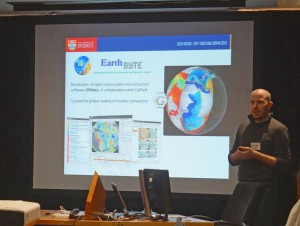 Recently, EarthByte joined the Australia-China Joint Research Centre for Tectonics and Earth Resources (ACTER). The joint research centre is led by the Institute for Geoscience Research at Curtin University and the Institute of Geology and Geophysics of the Chinese Academy of Sciences, with involvement of Australian and Chinese universities and industry partners. The aim of the centre is to promote joint research activities, the exchange of staff and students, and to foster long-term mutually-beneficial collaboration between Australian and Chinese research groups. … Read more…
Recently, EarthByte joined the Australia-China Joint Research Centre for Tectonics and Earth Resources (ACTER). The joint research centre is led by the Institute for Geoscience Research at Curtin University and the Institute of Geology and Geophysics of the Chinese Academy of Sciences, with involvement of Australian and Chinese universities and industry partners. The aim of the centre is to promote joint research activities, the exchange of staff and students, and to foster long-term mutually-beneficial collaboration between Australian and Chinese research groups. … Read more…
Nature Geoscience – Long-term interaction between mid-ocean ridges and mantle plumes
Whittaker, J. M., Afonso, J. C., Masterton, S., Müller, R. D., Wessel, P., Williams, S. E., & Seton, M. (2015). Long-term interaction between mid-ocean ridges and mantle plumes. Nature Geoscience, 8(6), 479-483. doi: http://dx.doi.org/10.1038/ngeo2437. Summary Plate tectonic motions are commonly considered to be driven by slab pull at subduction zones and ridge push at mid-ocean … Read more…
Long-term interaction between mid-ocean ridges and mantle plumes
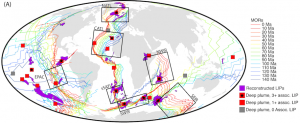 Citation
Citation
Whittaker, J. M., Afonso, J. C., Masterton, S., Müller, R. D., Wessel, P., Williams, S. E., & Seton, M. (2015). Long-term interaction between mid-ocean ridges and mantle plumes. Nature Geoscience, 8(6), 479-483.
Summary
Plate tectonic motions are commonly considered to be driven by slab pull at subduction zones and ridge push at mid-ocean ridges, with motion punctuated by plumes of hot material rising from the lower mantle. Within this model, the geometry and location of mid-ocean ridges are considered to be independent of lower-mantle dynamics, such as deeply sourced plumes that produce voluminous lava eruptions-termed large igneous provinces. Here we use a global plate model to reconstruct the locations of large igneous provinces relative to plumes and mid-ocean ridges at the time they formed. … Read more…
Geophysical Journal International – Absolute motion of Africa around Hawaii-Emperor bend time
Maher, S. M., Wessel, P., Müller, R. D., Williams, S. E., & Harada, Y. (2015). Absolute plate motion of Africa around Hawaii-Emperor bend time. Geophysical Journal International, 201(3), 1743-1764. doi: 10.1093/gji/ggv104. Absolute plate motion of Africa around Hawaii-Emperor bend time Download supplementary materials – zip file
Lord Howe Rise IODP workshop held at University of Sydney
Date: 2015 April 7-10 Venue: The University of Sydney Description: A science meeting at the University of Sydney was held to discuss details of the seven science themes in the Geoscience Australia (GA) – Japan Agency for Marine-Earth Science and Technology (JAMSTEC) initiated Lord Howe Rise IODP Pre-proposal, IODP proposal 871-Pre. The purpose of the meeting was to look … Read more…
ScienceNews features an article on Pacific plate motions paper
EarthByte paper ‘Revision of Paleogene plate motions in the Pacific and implications for the Hawaiian-Emperor bend‘ is featured in ScienceNews with an article entitled ‘Plate loss gave chain of Pacific islands and seamounts a bend‘. Revision of Paleogene plate motions in the Pacific and implications for the Hawaiian-Emperor bend
Geology – Revision of Paleogene plate motions in the Pacific and implications for the Hawaiian-Emperor bend
Wright, N. M., Müller, R. D., Seton, M., & Williams, S. E. (2015). Revision of Paleogene plate motions in the Pacific and implications for the Hawaiian-Emperor bend. Geology, 43(5), 455-458. doi: 10.1130/G36303.1. Revision of Paleogene plate motions in the Pacific and implications for the Hawaiian-Emperor bend
Earth and Planetary Science Reviews – Absolute plate motions since 130 ma constrained by subduction zone kinematics
Williams, S., Flament, N., Müller, R. D., & Butterworth, N. (2015). Absolute plate motions since 130 Ma constrained by subduction zone kinematics. Earth and Planetary Science Letters, 418, 66-77. doi:10.1016/j.epsl.2015.02.026. Absolute plate motions since 130 Ma constrained by subduction zone kinematics
Research voyage on RV Investigator funded for 2016
Dr Maria Seton and Dr Simon Williams from the School of Geosciences and colleagues from GNS Science and the Geological Survey of New Caledonia were awarded ship time on Australia’s new, state-of-the-art research vessel, the RV Investigator. The supplementary voyage, with Dr Seton as Chief Scientist, will investigate the continuity of Australian terranes into Zealandia … Read more…
Supplementary resources for “Absolute plate motions since 130 Ma constrained by subduction zone kinematics”
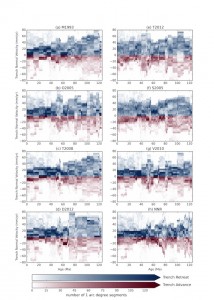 Citation
Citation
Williams, S., Flament, N., Müller, R. D., & Butterworth, N. (2015). Absolute plate motions since 130 Ma constrained by subduction zone kinematics. Earth and Planetary Science Letters, 418, 66-77. doi:10.1016/j.epsl.2015.02.026.
Summary
The supplementary data set comprise plate reconstructions from 130 Ma to present-day, designed to be used within the open-source reconstruction software GPlates.
There are eight sets of reconstructions. In each case, the relative plate motion (RPM) model is unchanged; the differences lie in the absolute plate motion (APM) model. This is expressed in the rotation file as the finite poles of rotation that describe motion of Africa relative to the Earth’s spin-axis. These files were the basis of the results presented in the EPSL paper. … Read more…
Supplementary resources for "Absolute plate motions since 130 Ma constrained by subduction zone kinematics"
 Citation
Citation
Williams, S., Flament, N., Müller, R. D., & Butterworth, N. (2015). Absolute plate motions since 130 Ma constrained by subduction zone kinematics. Earth and Planetary Science Letters, 418, 66-77. doi:10.1016/j.epsl.2015.02.026.
Summary
The supplementary data set comprise plate reconstructions from 130 Ma to present-day, designed to be used within the open-source reconstruction software GPlates.
There are eight sets of reconstructions. In each case, the relative plate motion (RPM) model is unchanged; the differences lie in the absolute plate motion (APM) model. This is expressed in the rotation file as the finite poles of rotation that describe motion of Africa relative to the Earth’s spin-axis. These files were the basis of the results presented in the EPSL paper. … Read more…
Jonathon Leonard undertakes a 6 week summer scholarship
Jonathon Leonard is undertaking a 6 week summer scholarship with Nicolas Flament and Simon Williams. He will be producing a deforming plate model of the Arabia-Eurasia collision.
Earth-Science Reviews – Geological and kinematic constraints on late Cretaceous to mid Eocene plate boundaries in the Southwest Pacific
Matthews, K. J., Williams, S. E., Whittaker, J. M., Müller, R. D., Seton, M., & Clarke, G. L. (2015). Geologic and kinematic constraints on Late Cretaceous to mid Eocene plate boundaries in the southwest Pacific. Earth-Science Reviews, 140, 72-107. doi: 10.1016/j.earscirev.2014.10.008. Geologic and kinematic constraints on Late Cretaceous to mid Eocene plate boundaries in the southwest … Read more…
New GPlates Portal available
EarthByte have launched a new cloud-based GPlates Web Portal that was used by almost 40 000 users over the last long-weekend! It took GPlates software over ten years to get that many users, so this is a huge achievement and also makes GPlates accessible to a broader audience! The GPlates portal can be used to … Read more…
Geophysics – Mapping crustal thickness using marine gravity data: Methods and uncertainties
Bai, Y., Williams, S. E., Müller, R. D., Liu, Z., & Hosseinpour, M. (2014). Mapping crustal thickness using marine gravity data: Methods and uncertainties. Geophysics, 79(2), G27-G36. doi: 10.1190/GEO2013-0270. Mapping crustal thickness using marine gravity data: Methods and uncertainties Download supplementary material

